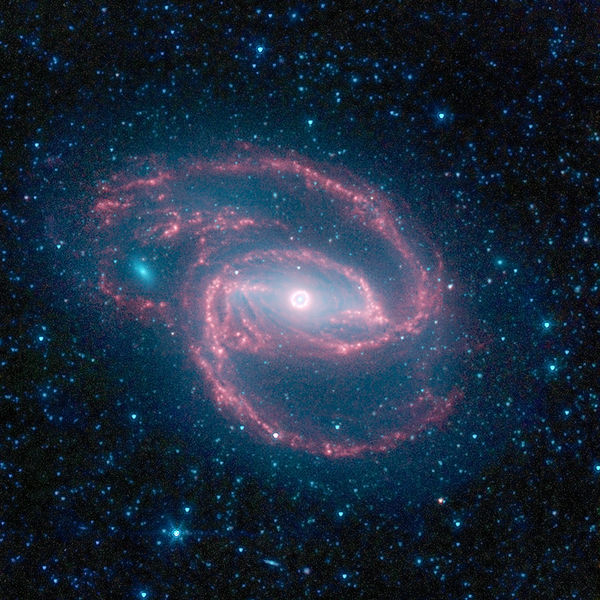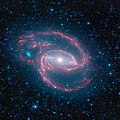Sary:Coiled Galaxy.jpg

Haben'ny topi-maso: 600 × 600 teboka. Habe hafa: 240 × 240 teboka | 480 × 480 teboka | 768 × 768 teboka | 1 024 × 1 024 teboka | 2 056 × 2 056 teboka
Rakitra niaviana (2 056 × 2 056 teboka, haben'ilay rakitra : 1,04 Mio, endrika MIME : image/jpeg)
Tantara ny rakitra
Tsindrio eo amin'ny daty/ora iray mba hijery ny toetra n'ilay rakitra tamin'io fotoana io.
| Daty sy ora | saritapaka | Habe | Mpikambana | resaka | |
|---|---|---|---|---|---|
| ankehitriny | 24 Mey 2010 à 23:20 |  | 2 056 × 2 056 (1,04 Mio) | Tryphon | Better quality, from http://www.spitzer.caltech.edu/Media/releases/ssc2009-14/ssc2009-14a.shtml (http://ipac.jpl.nasa.gov/media_images/ssc2009-14a1.jpg). |
| 11 Aogositra 2009 à 13:29 |  | 2 056 × 2 056 (457 kio) | TonyBallioni | {{Information |Description={{en|1=Original caption released with photo: NASA's Spitzer Space Telescope has imaged a wild creature of the dark -- a coiled galaxy with an eye-like object at its center.The 'eye' at the center of the galaxy is actually a mons |
Fampiasana an'io rakitra io
Tsy misy pejy mampiasa an'ity rakitra ity.
Fampiasan-drakitra maneran-tontolo
Mampiasa ity rakitra ity ireo wiki hafa ireo:
- Fampiasana eo amin'i ar.wikipedia.org
- Fampiasana eo amin'i ast.wikipedia.org
- Fampiasana eo amin'i be-tarask.wikipedia.org
- Fampiasana eo amin'i cs.wikipedia.org
- Fampiasana eo amin'i cy.wikipedia.org
- Fampiasana eo amin'i de.wikipedia.org
- Fampiasana eo amin'i el.wikipedia.org
- Fampiasana eo amin'i en.wikipedia.org
- NGC 1097
- List of spiral galaxies
- Talk:NGC 1097
- Wikipedia:Featured pictures/Space/Looking out
- Wikipedia:Featured pictures thumbs/36
- Wikipedia:Featured picture candidates/November-2013
- Wikipedia:Featured picture candidates/File:Coiled Galaxy.jpg
- User talk:The Herald/Archive 4
- Wikipedia:Picture of the day/July 2015
- Template:POTD/2015-07-29
- User talk:The Herald/Archive 31
- Wikipedia:Main Page history/2015 July 29
- Wikipedia:Reference desk/Archives/Miscellaneous/2015 July 29
- Fampiasana eo amin'i es.wikipedia.org
- Fampiasana eo amin'i fa.wikipedia.org
- Fampiasana eo amin'i fr.wikipedia.org
- Fampiasana eo amin'i id.wikipedia.org
- Fampiasana eo amin'i it.wikipedia.org
- Fampiasana eo amin'i ja.wikipedia.org
- Fampiasana eo amin'i kk.wikipedia.org
- Fampiasana eo amin'i ko.wikipedia.org
- Fampiasana eo amin'i mk.wikipedia.org
- Fampiasana eo amin'i no.wikipedia.org
- Fampiasana eo amin'i pl.wikipedia.org
- Fampiasana eo amin'i pl.wikinews.org
- Fampiasana eo amin'i pt.wikipedia.org
- Fampiasana eo amin'i sk.wikipedia.org
Hijery fampiasana eran-terikasan'ity rakitra ity.


